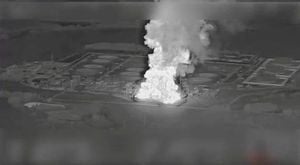Twenty years after Hurricane Katrina tore through the Gulf Coast, New Orleans stands as a city marked by both deep scars and indomitable spirit. On August 29, 2025, the city and its neighbors paused to remember the devastation wrought by the Category 3 hurricane—an event that left nearly 1,400 dead across five states, according to the Associated Press, and more than 1,800 by U.S. Northern Command estimates, and changed the region forever.
Under gray, reflective skies, dignitaries, survivors, and longtime residents gathered at a memorial cemetery in New Orleans, where dozens of Katrina's unidentified victims are interred. Orrin Duncan, who worked for the coroner during the disaster, has made it his mission to keep their memory alive, ensuring the cemetery is cared for each year. "We do everything to keep the memory of these people alive," Duncan told the Associated Press. The city’s mayor, LaToya Cantrell, led a solemn procession as jazz clarinetist Michael White played “When the Saints Go Marching In,” a fitting tribute in a city where music is a language of both grief and resilience. "New Orleans is still here; New Orleans still stands," Cantrell declared. "New Orleans came back better and stronger than ever before."
The day’s commemorations were far from somber alone. In the Lower Ninth Ward—a predominantly Black neighborhood devastated when the levee system failed—hundreds watched as children in white sang a song of survival atop the rebuilt levee. Their voices rang out: "We are the children of the ones who did not die... And we are the children of the ones who persevered." The parade that followed, known as a second line, was a jubilant, brass-filled march through the streets. A tradition since 2006, the second line draws its roots from African American jazz funerals, blending mourning and celebration. This year, revelers in Mardi Gras costumes, dancers, and musicians paraded from the site of the levee breach to a rally filled with speakers and performers, as reported by WORLD News Group.
Yet, the mood was not without reflection and frustration. Community leaders and residents recalled the sluggish government response that exacerbated suffering in the city’s darkest hours. "Government neglect killed us," civil rights attorney Tracie Washington said, vowing that the community would never forget. There was also concern about the future, with some worried about the potential dismantling of the Federal Emergency Management Agency and the rollback of climate change protections, both of which could leave New Orleans more vulnerable to future storms.
Across the Gulf Coast, communities in Mississippi and Alabama also marked the anniversary. In Gulfport, Mississippi, former Governor Haley Barbour remembered the "utter obliteration" left in Katrina’s wake, likening the destruction to "the hand of God had wiped away the coast." St. Bernard Parish in Louisiana held a memorial Mass and wreath-laying ceremony, while Governor Jeff Landry ordered all flags to fly at half-staff and formally designated August 29 as Hurricane Katrina Remembrance Day. Throughout the day, Americans nationwide were invited to observe a minute of silence at 11:20 p.m. local time, a gesture of unity and remembrance.
In the days leading up to the anniversary, New Orleans hosted a slate of events: documentary screenings, art exhibitions, and panel discussions at local museums and libraries. These gatherings provided space for residents to process the trauma and reflect on what two decades have meant for the city. Erander Guss-Lee, a security guard at a documentary screening, summed up the complicated emotions: pride in survival, but reluctance to relive the pain. "We’re still here," she said. "Believe that."
But survival, for many, is not enough. As the New York Times reported, hopes that Katrina’s aftermath would spur better governance, schools, and infrastructure have only partly materialized. The city has rebuilt its levee system and improved drainage, but many residents remain frustrated by persistent problems—broken streetlights, unreliable drainage pumps, and a sense that City Hall is not working for them. The unpopular mayor faces indictment, and the city’s population, once nearly half a million, now stands at around 384,000. The exodus hit Black residents hardest, with about 120,000 fewer living in the city than before the storm. The homeownership gap between Black and white residents, which narrowed after Katrina, is widening once again. Locals also lament the city’s heavy reliance on tourism, which often means low-wage jobs and economic vulnerability.
Still, there are glimmers of hope. Lamar Gardere, executive director of the Data Center, pointed to improvements in infrastructure and a recent drop in the murder rate. He likened the city’s trajectory to its beloved NFL team, the Saints—capable of greatness, but facing tough seasons. "We know we can be successful," Gardere told the New York Times.
The anniversary also drew artistic tributes. Little Feat, the legendary Southern rock band with deep ties to New Orleans, released a new music video for "New Orleans Cries When She Sings"—a soulful ode to the city’s resilience. The song, originally the closing track of their recent album, Strike Up the Band, traces a journey from sorrow to celebration, mirroring the city’s own arc. Co-founder Bill Payne reflected on the night before Katrina struck, recalling a sense of foreboding and the chaos that followed. "What the community endured would have been intolerable anywhere else in the United States," Payne said in an interview with Relix. "Twenty years later to the day, New Orleans continues as it always has, with defiance and grit and a deep-seated, well-worn vulnerability. Its spirit always rises above it all, which is the true testament to how life should be lived. May New Orleans live forever."
Political leaders across the spectrum echoed themes of resilience and remembrance. Governor Landry and Senator Bill Cassidy both emphasized Louisiana’s rebirth and ongoing efforts to prevent future disasters. Representative Troy Carter reminded residents that Katrina is more than history—it’s a living memory for those who survived.
For many, the anniversary is a reminder of both loss and the necessity of looking ahead. Charles Taylor, a Seventh Ward resident, pointed to the city’s economic dependence on tourism with a mix of resignation and hope. "That’s who this city caters to," he said, gesturing toward revelers on Bourbon Street. Others, like artist Carlos Talbott, focused on the future: "Something unbelievably horrible happened to us. But the Earth doesn’t stop, right? We’re still going."
As the sun set over the French Quarter and the last notes of brass faded, New Orleans faced its next chapter—uncertain, yes, but still standing. The city’s spirit, battered but unbroken, continues to rise with every anniversary, every parade, and every song.






